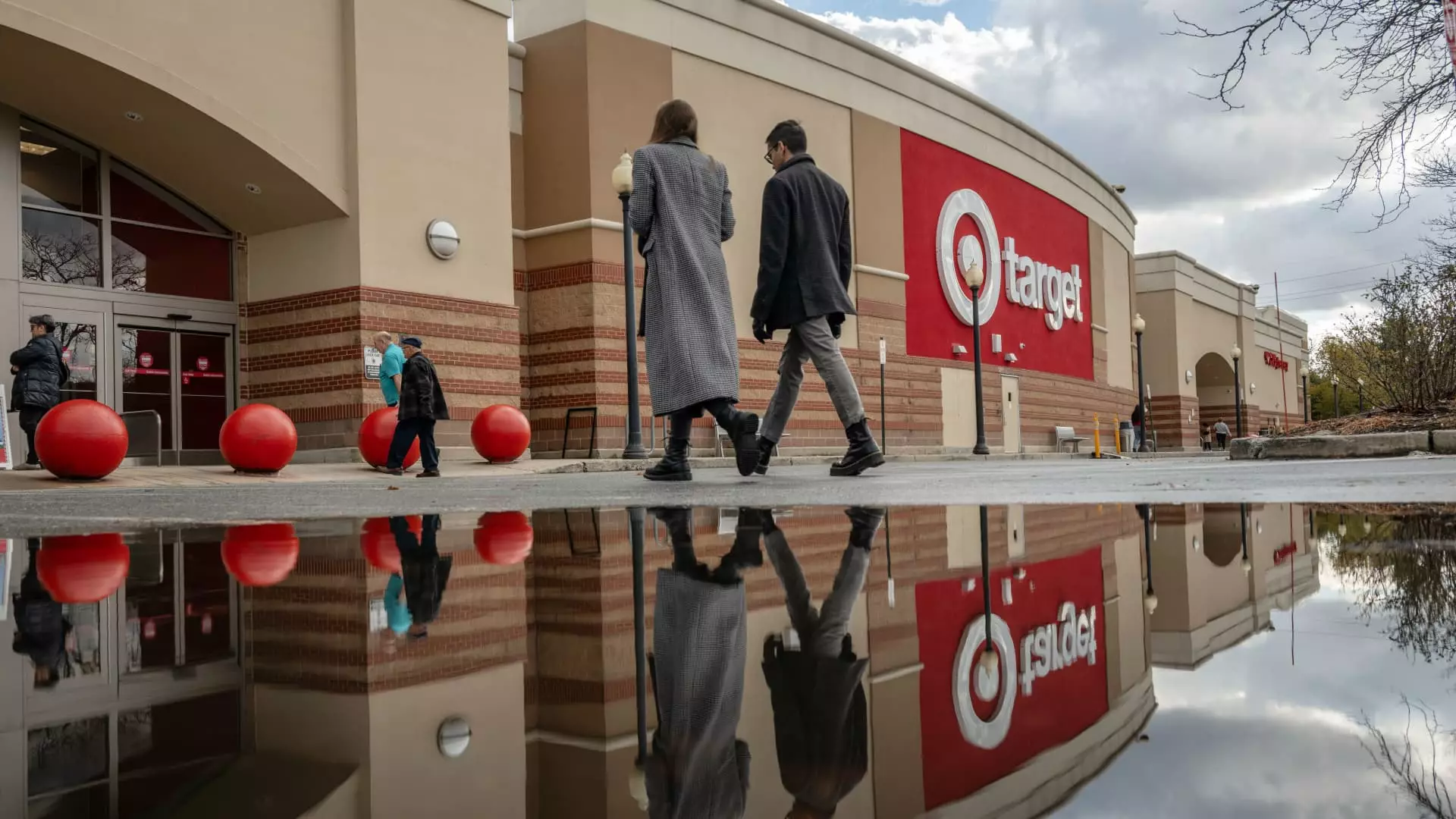The festive season traditionally heralds a surge in consumer spending, with retailers eagerly anticipating the influx of cash as shoppers indulge in holiday purchases. However, as the latest earnings reports reveal, not every brand is benefiting from the holiday spirit. The disparity in sales performance among retailers continues to grow, highlighting the challenges many face in these shifting economic currents.
The Dichotomy of Retail Success This Season
In an environment marked by increasing consumer selectivity, retailers such as Walmart and Dick’s Sporting Goods have reported encouraging results, capturing the attention of shoppers looking to spend. Conversely, giants like Target and Kohl’s have struggled to meet expectations, raising alarm bells about their performance during the critical holiday shopping window. According to Neil Saunders, managing director of GlobalData Retail, consumers are adjusting their spending habits. While they may still indulge, they opt for fewer items, making judicious choices about where to shop. This phenomenon underscores a pivotal moment for retailers: the need to offer compelling reasons for consumers to choose them over competitors, particularly the weaker ones.
Despite recent easing in inflation rates, the psychological impact of over two years of rising prices continues to shape consumer behavior. Many shoppers remain cautious, prioritizing essential items while scrutinizing discretionary spending. The ongoing financial climate has encouraged a mindset shift, where consumers choose to spend only when they perceive clear value. “People are still spending, but they perhaps don’t have as much to spend,” Saunders explains, illuminating the complexities at play.
As a result, forecasts for holiday spending are projected to rise modestly—between 2.5% to 3.5%—as reported by the National Retail Federation (NRF). While this marks an increase from the previous year, it belies the fact that many retailers are finding it increasingly challenging to attract foot traffic. The NRF’s figures underscore that the dynamics of retail are continuously evolving, leaving some brands well-placed to thrive while others flounder.
Optimistic vs. Cautious Retail Perspectives
Different retailers are adopting divergent strategies in light of these market fluctuations. Retailers like Abercrombie & Fitch and Dick’s Sporting Goods are demonstrating positive momentum, buoyed by robust early responses to their holiday lineups. Abercrombie’s Chief Operating Officer expressed excitement over early sales, signaling a forecast filled with promise. In stark contrast, Nordstrom and Walmart expressed skepticism about sustained consumer engagement, emphasizing responsible spending behavior among shoppers.
This divergence in outlook reveals a broader industry trend: successful retailers are aligning their strategies with current consumer values, while those falling behind are struggling to adapt. For instance, Target has responded to its challenges by diversifying its holiday offerings, including exclusive merchandise and strategic price reductions. This move may showcase a tactical recognition of the need to enhance consumer engagement amid a slow retail landscape.
Challenges Ahead: The Misalignment of Inventory and Consumer Preferences
Some retailers face difficulties stemming from inventory mismanagement. From oversized stocks to poorly curated selections, brands like Kohl’s are grappling with the fear that their inventory may not resonate with consumers. Saunders noted the potential pitfalls of focusing heavily on categories such as clothing and small appliances—items that may not hold immediate appeal for shoppers eager for unique, relevant gifts.
Additionally, there is a palpable shift toward practicality among consumers. As the holiday shopping season unfolds, many shoppers seek gifts imbued with tangible value rather than novelty. In this context, market research suggests that retailers must pivot towards offerings that promise utility. The notion that consumers are cutting back on “meaningless purchases,” such as novelty gifts, implies a broader cultural move towards spending that fosters connection and usefulness.
As the holiday season progresses, it will become increasingly vital for retailers to focus on delivering value—not just through competitive pricing but also by communicating the long-term benefits and satisfaction associated with their products. Understanding and capitalizing on evolving consumer expectations will be crucial in navigating this period.
Moreover, industry experts indicate that retailers should be cautious in their forecasting, using a comprehensive approach that considers external factors such as supply chain dynamics and changing consumer habits. The adage that retailers often prepare excuses for potential shortfalls rings true—preemptive strategies can soften the blow of disappointing results that may arise from systemic challenges rather than strategic missteps.
The current retail environment brims with opportunities alongside pitfalls. Retailers that effectively balance inventory management, consumer preferences, and value communication are likely to carve out a successful niche, while those that fail to adapt may find their footing increasingly tenuous. As we look forward to the remainder of the holiday season, the stakes are high, nudging retailers to refine their strategies and align more closely with the very shoppers they aim to engage.

Leave a Reply